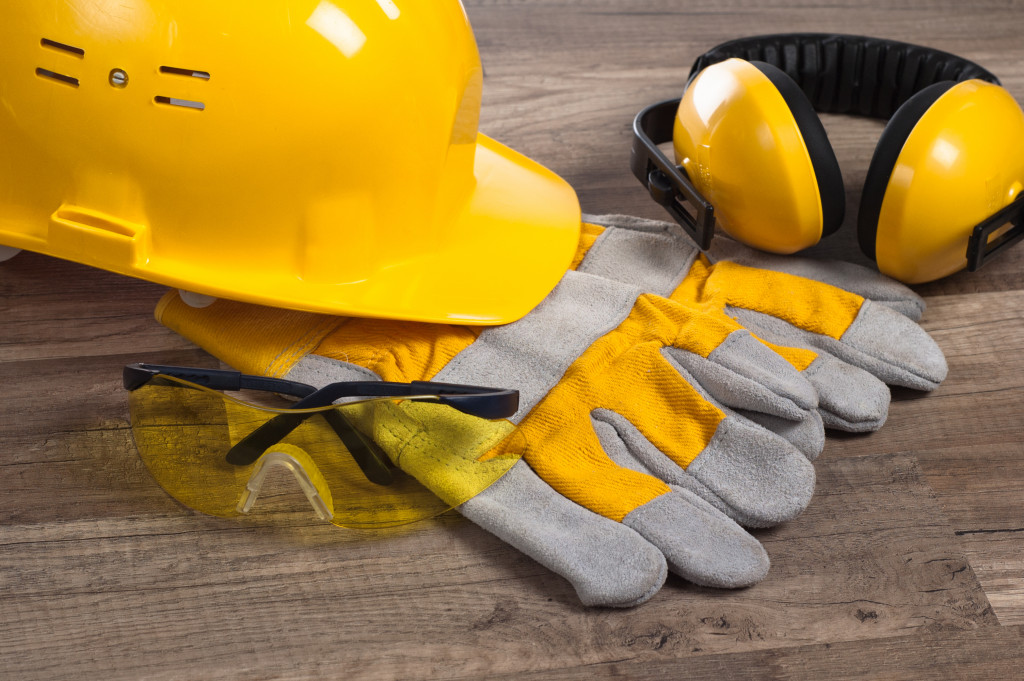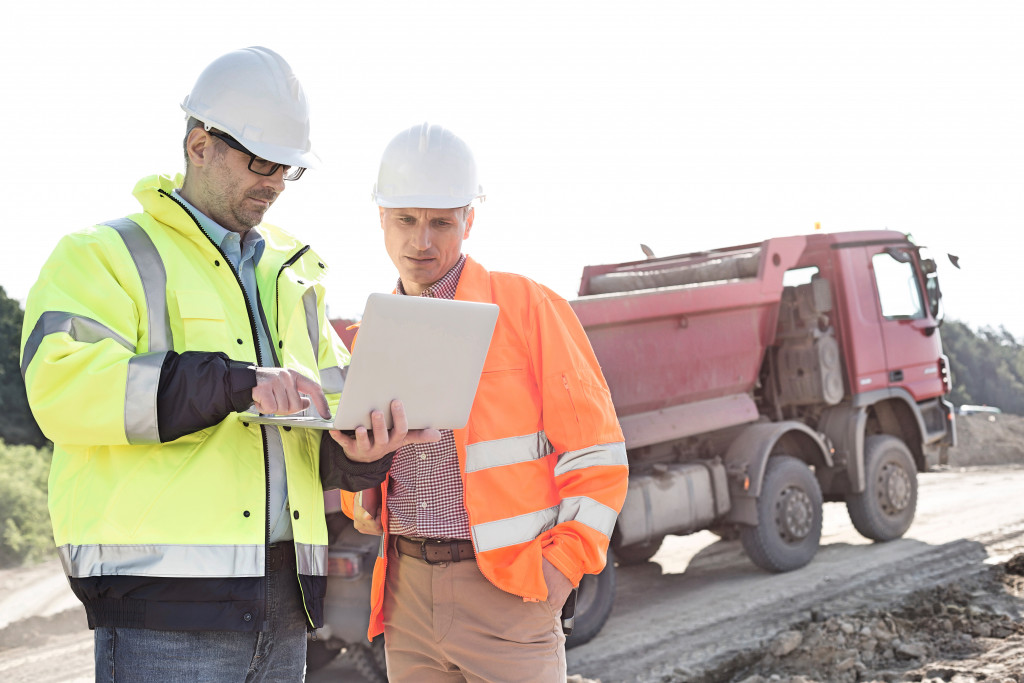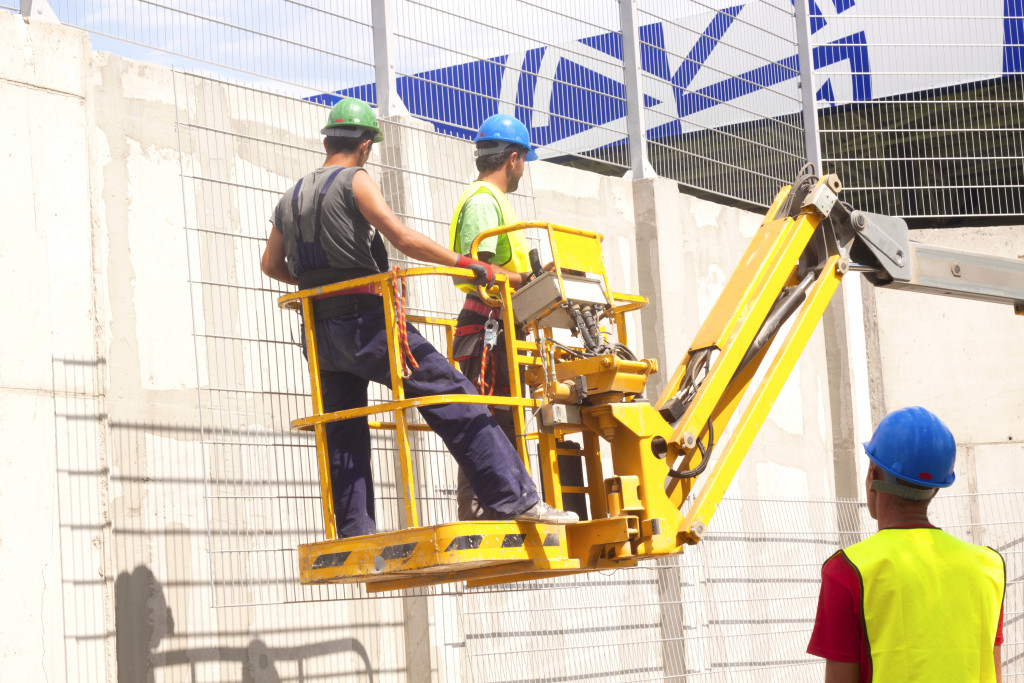- Regular site inspections, safety training, and usage of high-quality PPE are integral for maintaining safety standards in construction sites.
- Implementing protocols for properly using machinery and equipment can prevent accidents from faulty machinery.
- Worker involvement in safety discussions fosters a collective responsibility for safety on site.
- Load testing is crucial to ensure the structural integrity and safety of the construction project.
- Developing a comprehensive emergency response plan can save lives, minimize injury, and expedite recovery operations.
When embarking on the construction of a community building, your top priority should be ensuring safety at all times. From clearly marking hazard areas and maintaining proper use of personal protective equipment to conducting regular safety training for workers, there are numerous strategies you can employ to uphold the highest standards of safety on your construction site.
Perform regular site inspections.
Regular site inspections are vital in maintaining safety standards, allowing for real-time identification and immediate resolution of potential risks. Here are some tips:
Regularly conduct safety training sessions.
Safety training sessions should be an integral part of any construction project, not merely a box to be ticked. Regular courses ensure all new and experienced workers are reminded of safety regulations and procedures. It’s an opportunity to introduce new safety equipment or rules and reinforce safety culture’s importance.
These sessions can also be tailored to focus on risks specific to various job roles or the project’s current phase. In addition, safety training encourages open dialogue about safety concerns, providing a platform for workers to share their experiences and insights, which can lead to proactive problem-solving. Ultimately, the goal is to foster a work environment where safety is ingrained in every action and decision, significantly reducing the likelihood of accidents.
Invest in high-quality personal protective equipment (PPE).

Investing in high-quality personal protective equipment (PPE) is paramount in maintaining a safe construction environment. PPE, such as hard hats, safety glasses, work boots, and high-visibility clothing, protects workers from potential hazards on the job.
High-quality PPE can significantly reduce the risk of injury, providing an essential barrier between workers and dangerous tasks. Employers should not only provide appropriate PPE but also ensure that workers understand its proper use and maintenance. Equipment should be inspected regularly for any signs of wear and tear, and replaced as necessary.
Moreover, training sessions can teach workers the importance of using PPE properly. It’s not just about having the right gear; it’s about using it correctly. The correct use of PPE, rigorous safety training, and regular site inspections can help build a culture of safety within the construction site.
Implement protocols for proper usage of machinery.
Machinery and equipment form the backbone of any construction project, yet if improperly used, they can also be a source of significant danger. Implementing strict protocols for properly using machinery and equipment is an essential step to secure the safety of workers.
These protocols should cover aspects ranging from regular maintenance checks, and operational guidelines, to shutdown procedures. Clear, illustrative instructions should be displayed near each piece of machinery, and operators must undergo thorough training to ensure they understand how each machine works.
Establishing a system for reporting defects or operational issues is also crucial. This timely reporting can prevent accidents that stem from faulty machinery. Safe handling of equipment is not merely a responsibility of operators; it should be a collective commitment, creating a safer working environment for everyone on site.
Involve workers in safety discussions.

Encouraging worker participation in safety discussions is vital for any construction project. Workers are the ones on the frontline, encountering potential risks first-hand. Their insights and experiences are invaluable in identifying hazards and proposing practical solutions.
Regular safety meetings where all staff members can voice their concerns and suggest improvements can foster a sense of collective responsibility for safety on site. Such an open forum can also highlight the importance of individual actions in maintaining overall safety, creating a more conscientious and alert workforce.
By involving workers in safety discussions, management improves safety measures and promotes a culture of trust and mutual respect. This involvement can lead to a safer, more efficient working environment where everyone feels accountable for their safety and that of their colleagues.
Perform load testing.
Performing load testing is a crucial safety measure in construction projects. It involves placing a simulated load on a structure or material to measure its response and identify potential weaknesses. This process helps ensure that the construction can withstand its intended load without risk of collapse or damage.
Due to the technical nature and the paramount importance of this operation, hiring load testing services from a competent, experienced provider is highly recommended. These professionals have the necessary expertise and equipment to accurately simulate various load conditions and interpret results, thereby providing valuable insights for construction safety.
By hiring load testing services, you can ensure a thorough, accurate assessment, which is vital for ensuring the structural integrity and safety of the building. This proactive step can help prevent accidents, foster confidence in the structure’s reliability, and provide peace of mind for all involved in the project.
Develop a comprehensive emergency response plan.
Developing a comprehensive emergency response plan is essential to safety management in construction projects. This plan should outline the procedures to be followed during various emergencies, such as fires, structural collapses, or worker injuries.
Detailed evacuation routes, safe meeting points, and specific roles and responsibilities during an emergency should be clearly defined. Regular drills can help familiarize workers with the plan and ensure swift, coordinated responses when emergencies occur.
Additionally, the plan should be regularly reviewed and updated to reflect construction site or project changes. A well-prepared emergency response plan can save lives, minimize injury, and expedite recovery operations, solidifying safety as a core value on the construction site.
In conclusion, upholding safety standards on a construction site requires a proactive and comprehensive approach. Remember, it’s not just about meeting regulatory requirements; it’s about fostering a safety culture where everyone on site is committed to their safety and that of their colleagues. Take action now to maintain the highest levels of safety on your construction site and ensure a safe and productive working environment for all.

